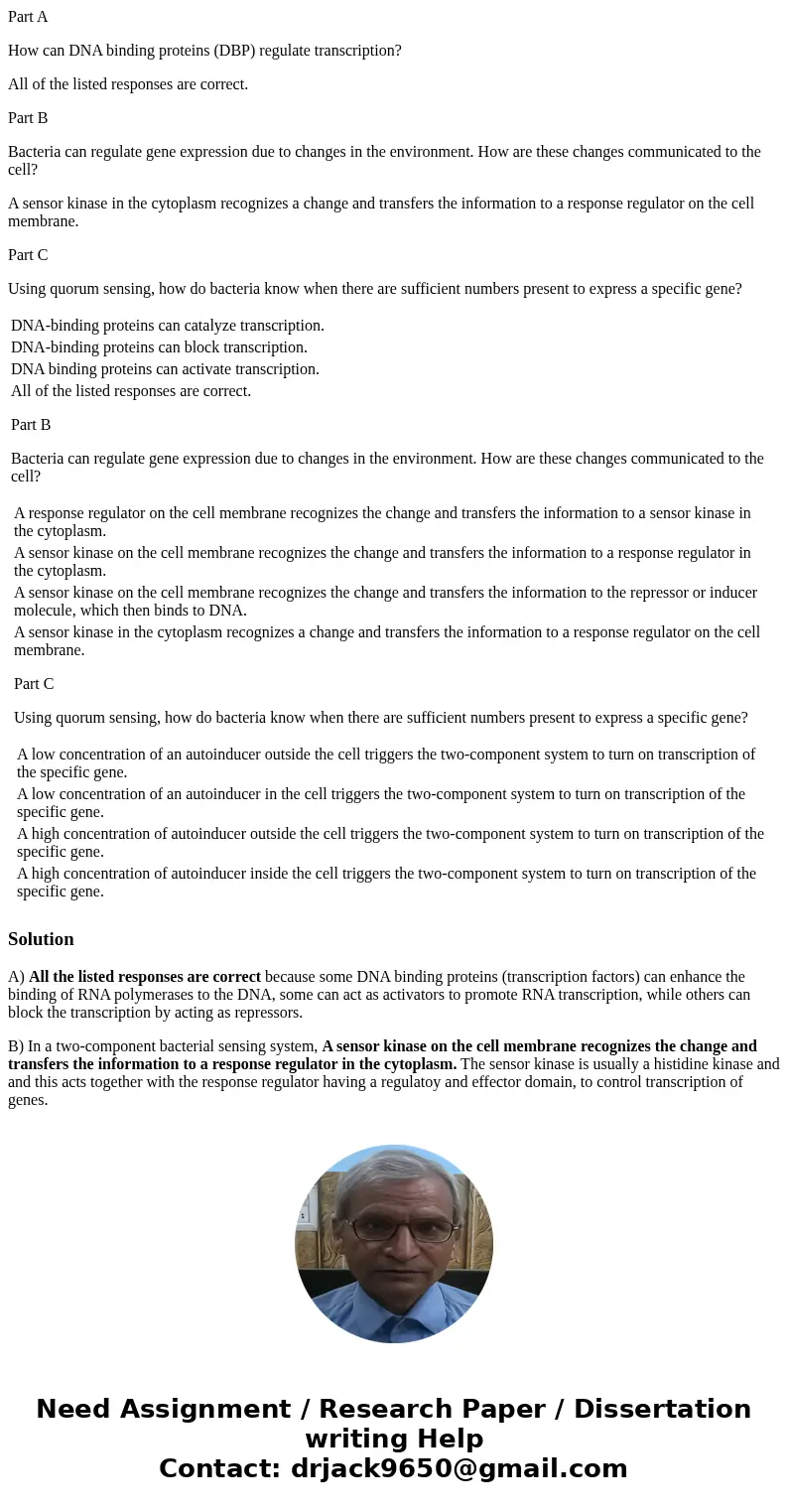Part A How can DNA binding proteins DBP regulate transcripti
Part A
How can DNA binding proteins (DBP) regulate transcription?
All of the listed responses are correct.
Part B
Bacteria can regulate gene expression due to changes in the environment. How are these changes communicated to the cell?
A sensor kinase in the cytoplasm recognizes a change and transfers the information to a response regulator on the cell membrane.
Part C
Using quorum sensing, how do bacteria know when there are sufficient numbers present to express a specific gene?
| DNA-binding proteins can catalyze transcription. | ||||||||
| DNA-binding proteins can block transcription. | ||||||||
| DNA binding proteins can activate transcription. | ||||||||
| All of the listed responses are correct. Part B Bacteria can regulate gene expression due to changes in the environment. How are these changes communicated to the cell?
|
Solution
A) All the listed responses are correct because some DNA binding proteins (transcription factors) can enhance the binding of RNA polymerases to the DNA, some can act as activators to promote RNA transcription, while others can block the transcription by acting as repressors.
B) In a two-component bacterial sensing system, A sensor kinase on the cell membrane recognizes the change and transfers the information to a response regulator in the cytoplasm. The sensor kinase is usually a histidine kinase and and this acts together with the response regulator having a regulatoy and effector domain, to control transcription of genes.
C) Quorum sensing is the regulation of gene response in bacteria which is related to population density. It is effected by molecules called autoinducers which are produced by the bacteria and whose concentration increases with increasing population density of the bacteria. In a two-component system, the sutoinducers diffuse into the cell and bind to a receptor to trigger transcription. So, A high concentration of autoinducer inside the cell triggers the two-component system to turn on transcription of the specific gene.


 Homework Sourse
Homework Sourse